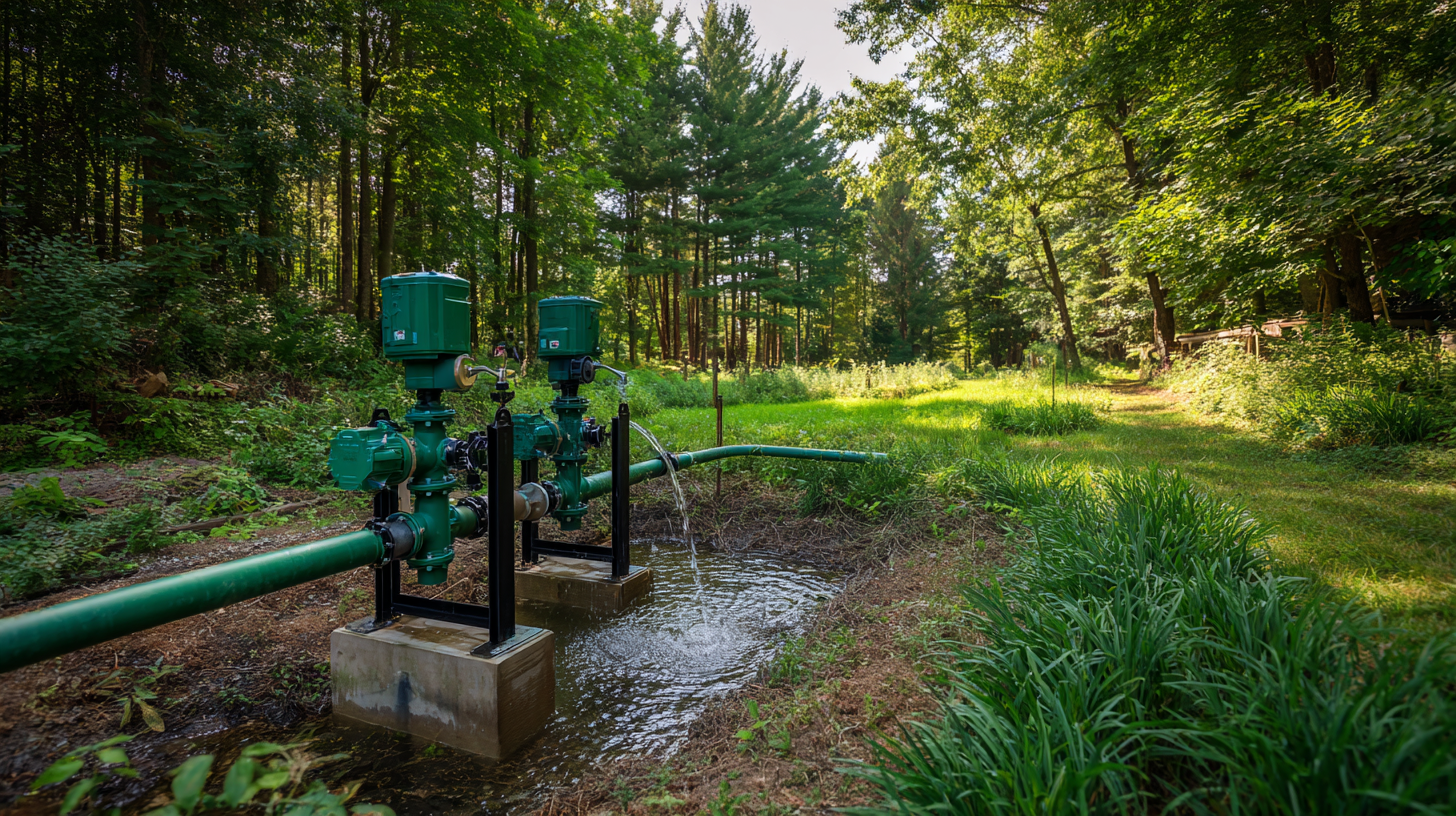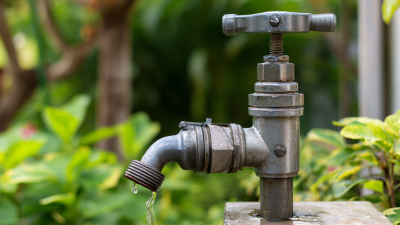Our Blog
Check out our innovative pump solutions and industry insights to see what's new in the pumping industry. Stay up to date with the latest trends and news in the world of pumping technology by following our pumping technology blog.
- Home
- Blog
Top 5 Benefits of Upgrading Your Well Pumps for Improved Water Quality and Efficiency
In today's fast-paced world, ensuring access to clean and efficient water is more crucial than ever, particularly for residential and agricultural applications.

Upgrading well pumps is one of the most effective strategies to enhance water quality and operational efficiency. According to the Water Systems Council, approximately 15% of U.S. households rely on private well systems, underscoring the importance of maintaining optimal performance in well pumps.
Aging or inefficient well pumps can lead to compromised water quality, increased energy consumption, and higher operational costs. Recent studies suggest that modern, high-efficiency well pumps can reduce energy usage by up to 50% compared to older models, making upgrades not only an environmentally friendly option but also a financially prudent decision.
By investing in advanced well pump technology, homeowners and businesses alike can achieve significant improvements in water quality and overall system efficiency, highlighting the critical nature of this often-overlooked component of water management.
Understanding the Importance of Upgrading Well Pumps for Water Quality
Upgrading well pumps is essential for ensuring superior water quality and enhancing overall efficiency. According to the National Ground Water Association (NGWA), over 15 million households in the U.S. rely on private wells for their water supply. However, outdated pump systems can lead to poor water quality, including issues such as bacterial contamination and sediment influx. A recent study found that upgrading to a modern well pump can significantly reduce contaminants by as much as 30%, improving the safety and taste of water for domestic use.
Moreover, the efficiency of well pumps directly impacts energy consumption and operational costs. The U.S. Department of Energy suggests that older pump models can consume up to 50% more electricity than newer, energy-efficient units. By investing in a modern well pump, homeowners can reduce their energy usage and lower their bills. In addition, newer pumps often come equipped with advanced monitoring systems that help in detecting problems early, leading to lower maintenance costs over time. Thus, upgrading well pumps is not just a matter of safety but also a financially sound decision.
Key Indicators That Show It's Time to Upgrade Your Well Pump
Upgrading your well pump can bring significant improvements in water quality and efficiency, but recognizing the right time for an upgrade is crucial. One key indicator is the decrease in water pressure. If you notice that your water flow has diminished or takes longer to fill fixtures, it could be a signal that your pump is struggling, often due to wear and tear over time. Additionally, changes in water taste, odor, or color can suggest contamination, indicating that your current pump may not be adequately filtering or delivering clean water.
Regular inspections can help identify other warning signs. For instance, if you see sediment or debris in your water supply, this may indicate that your well is compromised, necessitating immediate attention. According to a recent report focused on private water well management, these early signs should not be ignored, as they are crucial for maintaining safe drinking water standards. Investing in a new well pump not only addresses these issues but also enhances overall energy efficiency, potentially lowering monthly operational costs.

Benefits of Improved Water Efficiency Through Enhanced Pump Technology
Upgrading your well pumps can significantly enhance water efficiency, a crucial factor in both environmental sustainability and cost savings. The latest pump technology incorporates advanced features such as variable speed drives and smart sensors that optimize performance based on real-time water demand. This adaptability not only reduces energy consumption but also minimizes wear and tear on the system, leading to a longer lifespan for your equipment.
Additionally, improved pump designs can enhance water distribution and pressure consistency, which are essential for maintaining water quality. Effective water management helps prevent stagnation, reducing the risk of contaminants and ensuring that your water supply remains clean and safe. With enhanced efficiency, homeowners can see a notable reduction in utility bills while enjoying reliable access to high-quality water, making the investment in upgraded pump technology both economically and environmentally beneficial.
Top 5 Benefits of Upgrading Your Well Pumps for Improved Water Quality and Efficiency
How Upgrading Your Well Pump Can Reduce Maintenance Costs
 Upgrading your well pump not only enhances water quality but can also lead to significant reductions in maintenance costs. According to a report from the Water Systems Council, efficient well pump systems can lower energy consumption by up to 30%. This efficiency translates into decreased operational costs, allowing homeowners to allocate their budgets elsewhere. Older pumps are prone to breakdowns, leading to frequent repairs and increased spending on maintenance. In contrast, modern pumps typically feature advanced technology that minimizes wear and tear, improving overall reliability.
Upgrading your well pump not only enhances water quality but can also lead to significant reductions in maintenance costs. According to a report from the Water Systems Council, efficient well pump systems can lower energy consumption by up to 30%. This efficiency translates into decreased operational costs, allowing homeowners to allocate their budgets elsewhere. Older pumps are prone to breakdowns, leading to frequent repairs and increased spending on maintenance. In contrast, modern pumps typically feature advanced technology that minimizes wear and tear, improving overall reliability.
Tip: Regularly inspect your well pump system for signs of wear, such as unusual noises or fluctuations in water pressure. Early detection can prevent costly repairs down the line.
Moreover, upgrading to a higher-efficiency model usually means fewer repairs and a longer lifespan for the pump. The American Water Works Association reports that modern pumps can last up to 15 years longer than older models when properly maintained. This longevity not only boosts your water quality but also enhances your home’s value by leveraging better technology.
Tip: Consider scheduling professional maintenance at least once a year to ensure your well pump operates at peak efficiency and to identify potential issues before they become major problems.
Evaluating Different Well Pump Options for Optimal Water Quality Improvement
When considering ways to improve water quality and efficiency, evaluating different well pump options is crucial. Modern well pumps are available in various types, each designed to address specific water needs and quality issues. For instance, submersible pumps, which work underwater, are often more efficient and can handle higher levels of sediment and impurities, ensuring cleaner water. Similarly, jet pumps, which draw water using air pressure, can be excellent for shallow wells and are known for their reliability.
Selecting the right well pump also involves considering features such as variable speed technology, which adjusts the pump's operation based on real-time demand. This can lead to more efficient energy use and reduced wear on the system, contributing to longer lifespan and improved water quality. Additionally, investing in filtration systems integrated with well pumps enhances the removal of contaminants, providing safer drinking water. By thoroughly evaluating options and understanding their functionalities, property owners can significantly elevate their water supply's quality while optimizing system efficiency.
Top 5 Benefits of Upgrading Your Well Pumps for Improved Water Quality and Efficiency
| Benefit | Description | Impact on Water Quality | Energy Efficiency Improvement |
|---|---|---|---|
| Improved Filtration | Newer pumps typically come with better filtration systems. | Reduces sediment and contaminants. | Can lower operational energy costs. |
| Increased Flow Rate | Modern pumps provide a higher flow rate for better water supply. | Ensures consistent access to clean water. | Optimizes energy use for higher output. |
| Lower Maintenance Costs | Upgraded pumps require less frequent repairs. | Maintains water quality longer. | Savings on technician visits. |
| Enhanced Durability | Built to last with modern materials and technologies. | Reduces risks of equipment failure. | Lower energy expenditure over time. |
| Noise Reduction | New pumps operate more quietly, benefiting the environment. | Promotes a peaceful home environment. | Efficient operation leads to less strain. |



